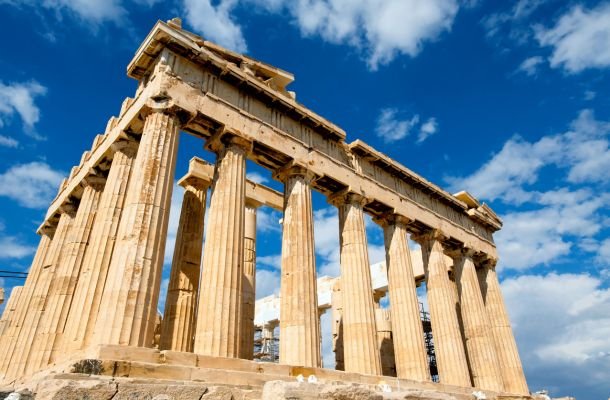History of Columbia, South Carolina

Columbia, the capital of South Carolina, is a city rich in history and culture. From its founding to its role in significant American historical events, Columbia has developed into a vibrant community. This detailed account traces the city’s evolution from its early days through its growth into a major Southern urban center.
Early History of Columbia, SC
Native American Presence
Before European settlers arrived, the area that is now Columbia was inhabited by Native American tribes, including the Congaree, Catawba, and Cherokee. The Congaree people, in particular, were known to have settled near the Congaree River, which provided a rich source of food and transportation. These tribes lived off the land, hunting, fishing, and farming the fertile soils of the region.
European Exploration and Settlement
European exploration in the Columbia area began in the early 16th century. Spanish and French explorers ventured into the region, but it wasn’t until the English established the Carolina colony in 1670 that permanent settlements began to take shape. By the 18th century, settlers, primarily of English and Scotch-Irish descent, moved into the area, establishing farms and small communities.
Founding of Columbia
The city of Columbia was officially founded in 1786, chosen as the site for the new state capital due to its central location. The South Carolina General Assembly sought to create a city that was equidistant from the coastal city of Charleston and the more inland areas, ensuring fair representation for all citizens. The city’s name, Columbia, was inspired by Christopher Columbus, reflecting the era’s patriotic fervor.
Columbia During the Antebellum Period
Growth and Development
During the Antebellum period, Columbia grew rapidly as it became the political and economic hub of South Carolina. The city was meticulously planned with a grid layout, wide streets, and large lots, symbolizing the city’s aspirations. Columbia became a center for trade, particularly in cotton, as plantations surrounded the city. The construction of railroads in the 1840s further boosted Columbia’s economic growth, connecting it to other major Southern cities.
Education and Culture
Columbia also became an intellectual center in the South during this period. The University of South Carolina, founded in 1801 as South Carolina College, became a focal point for higher education in the region. The institution attracted scholars and students from across the state, contributing to the city’s cultural development. Columbia also saw the establishment of churches, theaters, and social clubs, fostering a vibrant cultural scene.
Slavery and Society
Like much of the South, Columbia’s economy was deeply intertwined with slavery. The labor of enslaved African Americans fueled the city’s agricultural economy, particularly in the cotton industry. By the mid-19th century, Columbia had a significant population of enslaved people, and their presence was a stark reminder of the societal structure of the time. The wealth generated by slavery also led to the construction of grand homes and public buildings in Columbia, many of which still stand today.
Columbia During the Civil War
Secession and the Confederacy
As tensions between the North and South escalated, South Carolina became the first state to secede from the Union in December 1860. Columbia, as the state capital, played a crucial role in the secession movement. The city hosted the South Carolina Secession Convention, where the decision to leave the Union was made. Columbia then became a key location for the Confederacy, serving as a center for political and military activity.
The Burning of Columbia
One of the most significant events in Columbia’s history occurred in February 1865 when Union General William Tecumseh Sherman and his forces entered the city. Sherman’s army occupied Columbia on February 17, 1865, and that night, a devastating fire swept through the city, destroying much of it. The cause of the fire has been a subject of debate, with some blaming Union soldiers and others suggesting it was accidental. Regardless, the burning of Columbia marked a turning point in the city’s history, leaving much of it in ruins as the Civil War came to an end.
Reconstruction and the Post-War Era
Rebuilding Columbia
In the aftermath of the Civil War, Columbia faced the daunting task of rebuilding. The city was left in a state of disrepair, with many homes, businesses, and public buildings destroyed. The Reconstruction era brought both challenges and opportunities for Columbia. The federal government and various organizations provided aid to help rebuild the city’s infrastructure.
Economic Recovery
Columbia’s economy slowly began to recover in the post-war years. The agriculture industry, though severely impacted by the end of slavery, adapted to the new realities of the economy. Cotton production continued, though on a smaller scale, and industries such as textile manufacturing began to emerge. The city also saw the construction of new railroads, which played a key role in its economic revival.
Social and Political Changes
Reconstruction also brought significant social and political changes to Columbia. The end of slavery meant that African Americans in the city began to experience new freedoms, though they still faced significant discrimination and violence. The Reconstruction government in South Carolina, which included African American legislators, made efforts to promote civil rights and rebuild the state. However, these gains were met with resistance, leading to the eventual rise of Jim Crow laws and segregation in the late 19th century.
Columbia in the 20th Century
The Early 20th Century: Growth and Modernization
As the 20th century began, Columbia continued to grow and modernize. The city expanded its infrastructure, with new roads, bridges, and public buildings being constructed. The rise of the automobile industry also had a significant impact, leading to the development of new neighborhoods and suburban areas.
The Role of Education
Education remained a key focus for Columbia in the early 20th century. The University of South Carolina continued to grow, attracting students and faculty from across the country. The city also saw the establishment of several other educational institutions, including Benedict College and Allen University, both historically Black colleges.
The Great Depression and New Deal Era
The Great Depression of the 1930s brought economic hardship to Columbia, as it did to much of the country. However, the New Deal programs introduced by President Franklin D. Roosevelt provided much-needed relief. Projects such as the construction of the Columbia Canal and the Santee Cooper hydroelectric project helped to create jobs and stimulate the local economy.
World War II and Post-War Boom
World War II brought significant changes to Columbia. The city became a center for military activity, with Fort Jackson serving as a major training base for the U.S. Army. The presence of the military had a profound impact on Columbia’s economy and population, as soldiers and their families moved to the area.
Post-War Expansion
After the war, Columbia experienced a period of rapid growth and expansion. The city’s population increased, and new industries began to emerge. The construction of highways and the development of suburban neighborhoods also contributed to Columbia’s growth during this time.
Civil Rights Movement
The Civil Rights Movement of the 1950s and 1960s had a significant impact on Columbia. African American leaders in the city played a key role in the struggle for civil rights, organizing protests, sit-ins, and marches to challenge segregation and discrimination. The movement led to the eventual desegregation of public facilities and schools in Columbia, though the process was often met with resistance.
Modern Columbia: 1970s to the Present
Economic and Cultural Development
In the latter half of the 20th century, Columbia continued to develop economically and culturally. The city diversified its economy, with growth in sectors such as healthcare, education, and technology. The establishment of the Columbia Metropolitan Airport and the expansion of the University of South Carolina further contributed to the city’s growth.
Revitalization of Downtown
In recent decades, Columbia has seen significant efforts to revitalize its downtown area. Projects such as the redevelopment of the Congaree Vista, the construction of the Colonial Life Arena, and the revitalization of Main Street have transformed the city’s urban core. These efforts have attracted new businesses, residents, and visitors to the city.
Cultural Institutions and Events
Columbia has also become a center for culture and the arts in South Carolina. The city is home to several museums, including the South Carolina State Museum and the Columbia Museum of Art. Columbia also hosts numerous cultural events, such as the South Carolina State Fair, the Columbia International Festival, and the Indie Grits Film Festival, which showcase the city’s diverse and vibrant culture.
Challenges and Opportunities
Despite its growth and development, Columbia has faced several challenges in recent years. Issues such as economic inequality, education disparities, and infrastructure needs have been persistent concerns. However, the city has also embraced opportunities for innovation and progress, particularly in areas such as technology, sustainability, and community development.
Columbia’s Historic Landmarks
South Carolina State House
The South Carolina State House is one of Columbia’s most iconic landmarks. Originally constructed in the mid-19th century, the building has played a central role in the state’s political history. The State House is known for its distinctive architecture, including the dome that was added in the early 20th century. The grounds of the State House feature several monuments and memorials, including the Confederate Monument and the African American History Monument.
The University of South Carolina
The University of South Carolina’s historic Horseshoe is the heart of the university’s campus and one of the oldest parts of Columbia. The Horseshoe is surrounded by some of the university’s oldest buildings, including the South Caroliniana Library and the President’s House. The area is also home to the Maxcy Monument, which honors Jonathan Maxcy, the university’s first president.
The Robert Mills House
The Robert Mills House is another significant historic landmark in Columbia. Designed by Robert Mills, one of America’s first professional architects, the house is a prime example of Federal-style architecture. The house, which now operates as a museum, offers visitors a glimpse into life in Columbia during the early 19th century.
The Woodrow Wilson Family Home
The Woodrow Wilson Family Home, built in 1871, is the only museum in the nation dedicated to interpreting the Reconstruction era. It was the home of the 28th U.S. President, Woodrow Wilson, during his teenage years. The home has been restored to reflect the period and offers visitors an understanding of Columbia during Reconstruction.
Conclusion
Columbia, South Carolina, is a city with a rich and diverse history. From its founding as a planned capital city to its role in the Civil War and Reconstruction, Columbia has played a significant part in the history of South Carolina and the United States. The city’s growth and development over the centuries have been shaped by its people, its culture, and its ability to adapt to change. Today, Columbia continues to thrive as a vibrant and dynamic city, proud of its past and looking forward to its future.
Find us
Tuesday
Wednesday
Thursday
Friday
Saturday
Sunday
10 am – 10 am
10 am – 10 am
10 am – 10 am
10 am – 10 am
10 am – 10 am
10 am – 10 am






